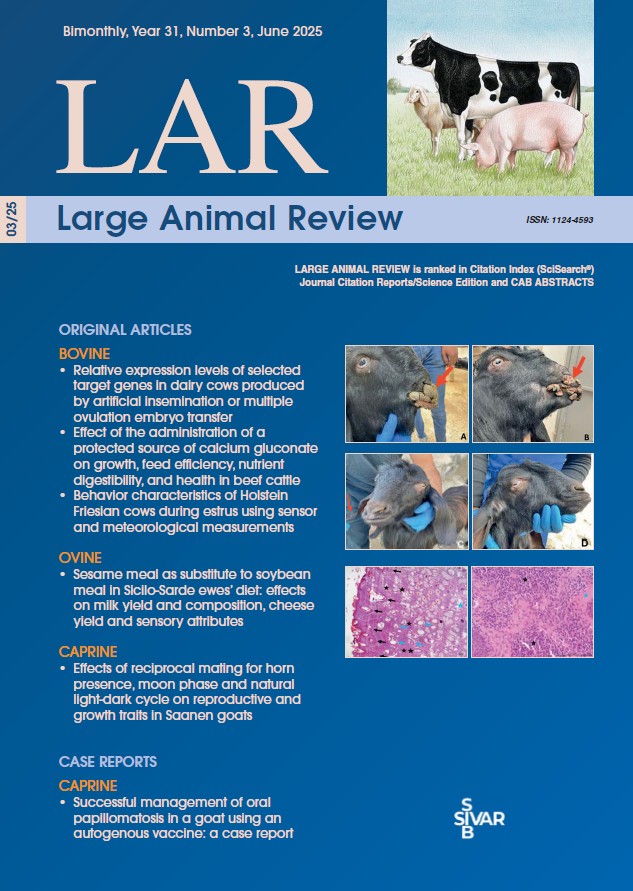Behavior Characteristics of Holstein Friesian Cows During Estrus Using Sensor and Meteorological Measurements
Abstract
This study evaluated oestrus detection, one of the major challenges in herd management for dairy farms worldwide, in Holstein Friesian cows using the Cow-Manager chip sensor system. A total of 105 estrus events from 15 cows were recorded over an 18-month research period using the ear-tag system. Throughout the study, behavior data were collected for a total of 3081 days. Of these, 84 were confirmed as estrus, and 21 were classified as suspicious estrus. The average duration of estrus was calculated to be 9.8 hours. These values were found as the highest values <70 groups in the THI group, in multiparous cows in the parity group, and 151+ group in the DIM group. Upon general examination, it was observed that estrus values in cows increased at night (32.4%) and decreased in the afternoon (19.3%). These values in the THI>70 group and primiparous cows were found at their highest levels in the morning. During estrus, cows exhibited respective increases of 124%, 4.8%, and 7.6% in high-active, active, and eating behaviors compared to non-estrus days, while not-active and rumination values decreased by 15.3% and 23.1%, respectively. According to non-estrus days, during estrus, high-active, active, and eating values increased by 124%, 4.8%, and 7.6%, respectively, while not-active and rumination values decreased by 15.3% and 23.1%. Findings from this study suggest that high-active and active values tend to increase towards estrus, reaching their peak at the onset of estrus, and gradually decrease towards the end of estrus. In addition, rumination values are lower than normal during the estrus period, beginning at their lowest level at the start of the period and decreasing further as estrus approaches. The research indicates that elevated temperatures can reduce the length of estrus and negatively affect reproductive performance. This study provides valuable insights into behavioral changes and estrus duration in Holstein Friesian cows, highlights the importance of monitoring physical activity and rumination patterns for accurate estrus detection.


